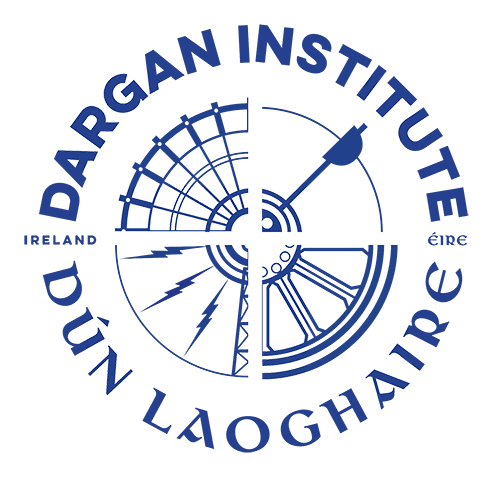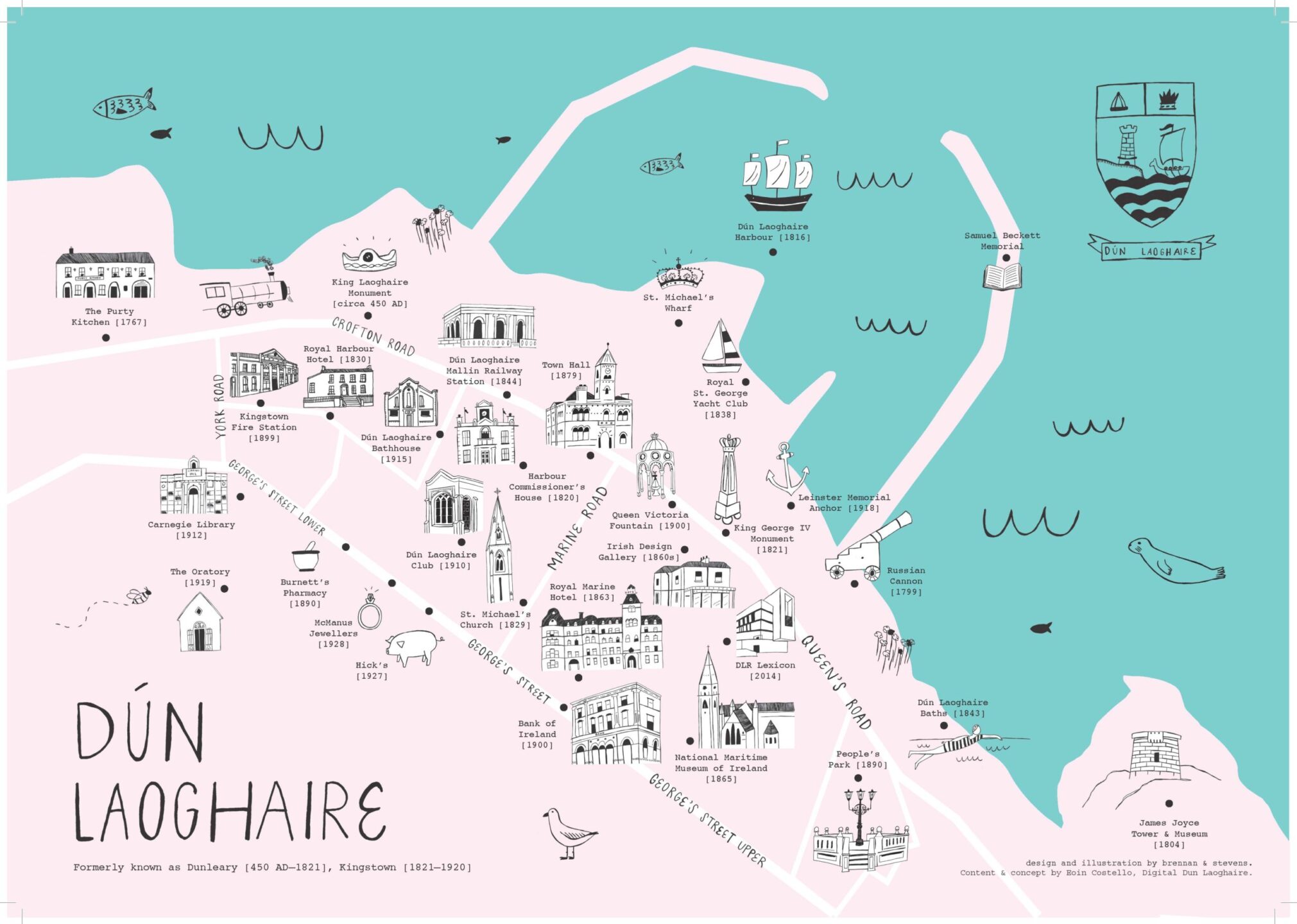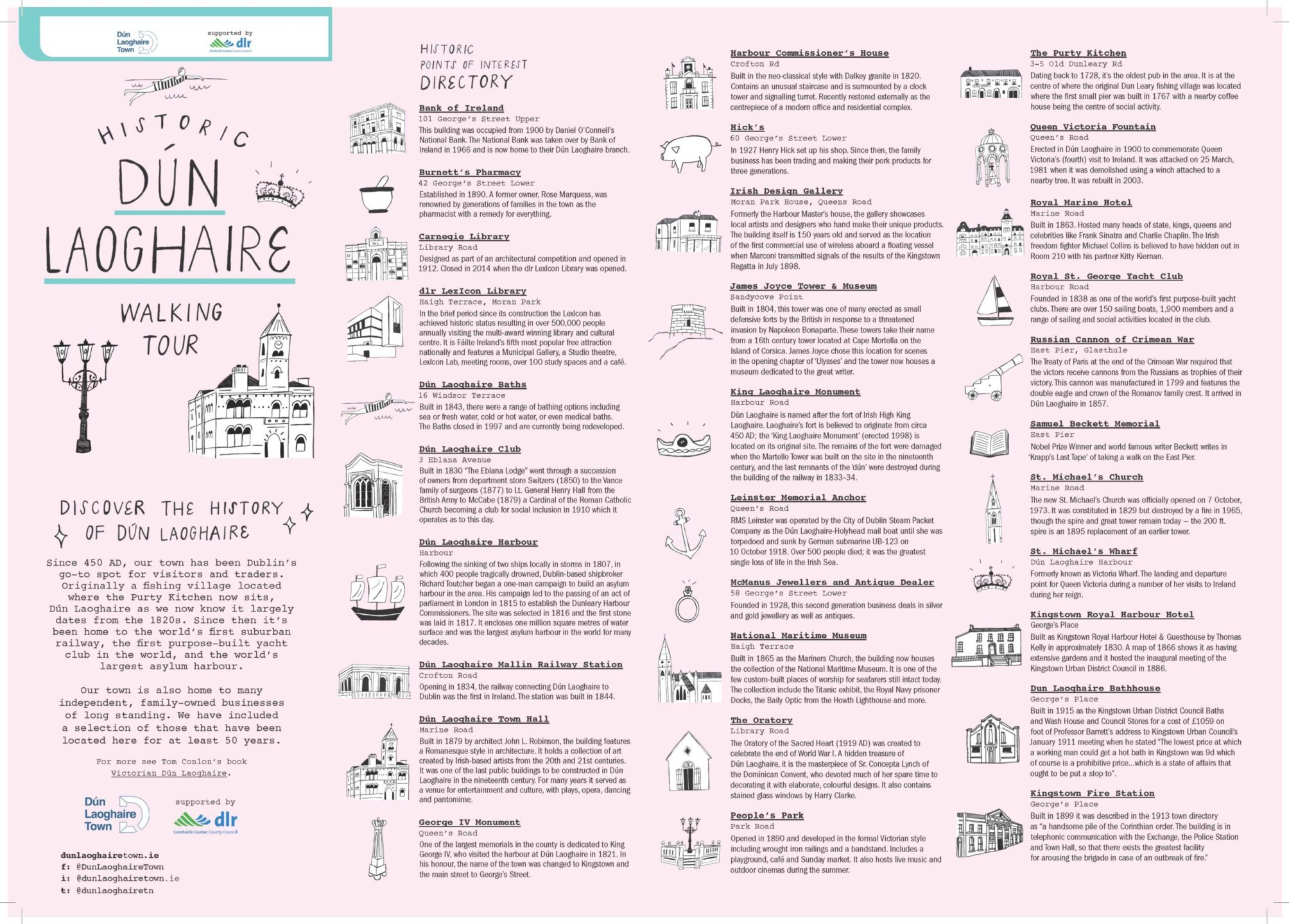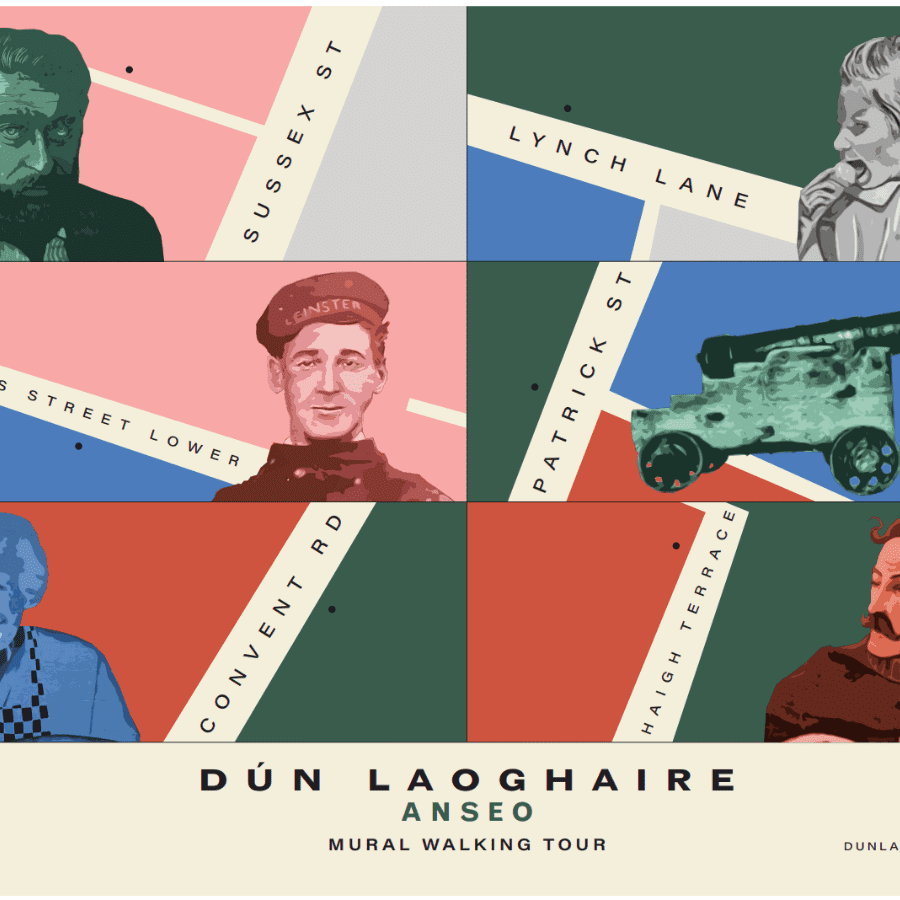Historic Dún Laoghaire
Our other speciality maps of Dún Laoghaire Town

A FAMILY SCAVENGER HUNT OF DUN LAOGHAIRE'S CURIOSITIES
So much history all within a short walking distance
Since 450 AD, our town has been Dublin’s go-to spot for visitors and traders. Originally a fishing village located where the Purty Kitchen now sits, Dún Laoghaire as we now know it largely dates from the 1820s. Since then it’s been home to the world’s first suburban railway, the first purpose-built yacht club in the world, and the world’s largest asylum harbour.
Our town is also home to many independent, family-owned businesses of long standing. We have included a selection of those that have been located here for at least 50 years. For more about the history of our town see Tom Conlon’s book “Victorian Dún Laoghaire”.
We have put together a handy walking tour for you below, design and illustration are by Brennan & Stevens.
Individual Points of Historic Interest in Dún Laoghaire Town
 Dún Laoghaire Harbour [1816] – Following the sinking of two ships locally in storms in 1807, in which 400 people tragically drowned, Dublin-based shipbroker Richard Toutcher began a one-man campaign to build an asylum harbour in the area. His campaign led to the passing of an act of parliament in London in 1815 to establish the Dunleary Harbour Commissioners. The site was selected in 1816 and the first stone was laid in 1817. It encloses one million square metres of water surface and was the largest asylum harbour in the world for many decades.
Dún Laoghaire Harbour [1816] – Following the sinking of two ships locally in storms in 1807, in which 400 people tragically drowned, Dublin-based shipbroker Richard Toutcher began a one-man campaign to build an asylum harbour in the area. His campaign led to the passing of an act of parliament in London in 1815 to establish the Dunleary Harbour Commissioners. The site was selected in 1816 and the first stone was laid in 1817. It encloses one million square metres of water surface and was the largest asylum harbour in the world for many decades.
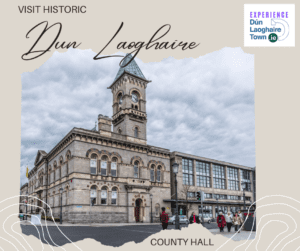 Town Hall [1879] – Marine Road Built in 1879 by architect John L. Robinson, the building features a Romanesque style in architecture. It holds a collection of art created by Irish-based artists from the 20th and 21st centuries. It was one of the last public buildings to be constructed in Dún Laoghaire in the nineteenth century. For many years it served as a venue for entertainment and culture, with plays, opera, dancing and pantomime.
Town Hall [1879] – Marine Road Built in 1879 by architect John L. Robinson, the building features a Romanesque style in architecture. It holds a collection of art created by Irish-based artists from the 20th and 21st centuries. It was one of the last public buildings to be constructed in Dún Laoghaire in the nineteenth century. For many years it served as a venue for entertainment and culture, with plays, opera, dancing and pantomime.
 King George IV Monument [1821] – Queen’s Road One of the largest memorials in the county is dedicated to King George IV, who visited the harbour at Dún Laoghaire in 1821. In his honour, the name of the town was changed to Kingstown and the main street to George’s Street.
King George IV Monument [1821] – Queen’s Road One of the largest memorials in the county is dedicated to King George IV, who visited the harbour at Dún Laoghaire in 1821. In his honour, the name of the town was changed to Kingstown and the main street to George’s Street.
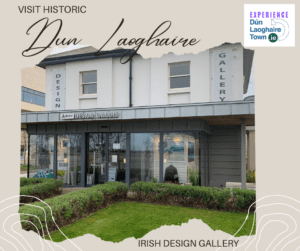 Irish Design Gallery [1860s] – Moran Park House, Queens Road Formerly the Harbour Master’s house, the gallery showcases local artists and designers who hand make their unique products. The building itself is 150 years old and served as the location of the first commercial use of wireless aboard a floating vessel when Marconi transmitted signals of the results of the Kingstown Regatta in July 1898.
Irish Design Gallery [1860s] – Moran Park House, Queens Road Formerly the Harbour Master’s house, the gallery showcases local artists and designers who hand make their unique products. The building itself is 150 years old and served as the location of the first commercial use of wireless aboard a floating vessel when Marconi transmitted signals of the results of the Kingstown Regatta in July 1898.
 National Maritime Museum of Ireland [1865] – Haigh Terrace Built in 1865 as the Mariners Church, the building now houses the collection of the National Maritime Museum. It is one of the few custom-built places of worship for seafarers still intact today. The collection include the Titanic exhibit, the Royal Navy prisoner Docks, the Baily Optic from the Howth Lighthouse and more.
National Maritime Museum of Ireland [1865] – Haigh Terrace Built in 1865 as the Mariners Church, the building now houses the collection of the National Maritime Museum. It is one of the few custom-built places of worship for seafarers still intact today. The collection include the Titanic exhibit, the Royal Navy prisoner Docks, the Baily Optic from the Howth Lighthouse and more.
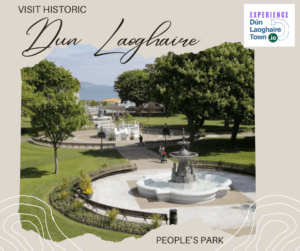 People’s Park [1890] – Park Road Opened in 1890 and developed in the formal Victorian style including wrought iron railings and a bandstand. Includes a playground, café and Sunday market. It also hosts live music and outdoor cinemas during the summer.
People’s Park [1890] – Park Road Opened in 1890 and developed in the formal Victorian style including wrought iron railings and a bandstand. Includes a playground, café and Sunday market. It also hosts live music and outdoor cinemas during the summer.
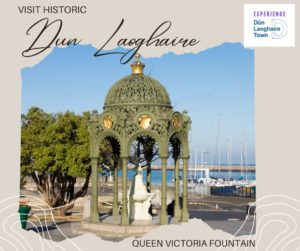 Queen Victoria Fountain [1900] – Queen’s Road Erected in Dún Laoghaire in 1900 to commemorate Queen Victoria’s (fourth) visit to Ireland. It was attacked on 25 March, 1981 when it was demolished using a winch attached to a nearby tree. It was rebuilt in 2003.
Queen Victoria Fountain [1900] – Queen’s Road Erected in Dún Laoghaire in 1900 to commemorate Queen Victoria’s (fourth) visit to Ireland. It was attacked on 25 March, 1981 when it was demolished using a winch attached to a nearby tree. It was rebuilt in 2003.
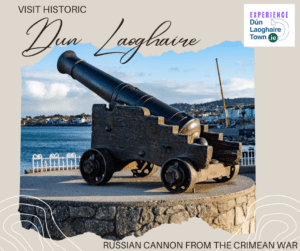 Russian Cannon from the Crimean War [1799] – East Pier, Glasthule The Treaty of Paris at the end of the Crimean War required that the victors receive cannons from the Russians as trophies of their victory. This cannon was manufactured in 1799 and features the double eagle and crown of the Romanov family crest. It arrived in Dún Laoghaire in 1857.
Russian Cannon from the Crimean War [1799] – East Pier, Glasthule The Treaty of Paris at the end of the Crimean War required that the victors receive cannons from the Russians as trophies of their victory. This cannon was manufactured in 1799 and features the double eagle and crown of the Romanov family crest. It arrived in Dún Laoghaire in 1857.
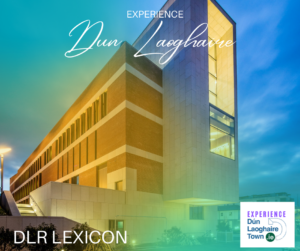 DLR LexIcon [2014] – Haigh Terrace, Moran Park In the brief period since its construction the LexIcon has achieved historic status resulting in over 500,000 people annually visiting the multi-award winning library and cultural centre. It is Fáilte Ireland’s fifth most popular free attraction nationally and features a Municipal Gallery, a Studio theatre, LexIcon Lab, meeting rooms, over 100 study spaces and a café.
DLR LexIcon [2014] – Haigh Terrace, Moran Park In the brief period since its construction the LexIcon has achieved historic status resulting in over 500,000 people annually visiting the multi-award winning library and cultural centre. It is Fáilte Ireland’s fifth most popular free attraction nationally and features a Municipal Gallery, a Studio theatre, LexIcon Lab, meeting rooms, over 100 study spaces and a café.
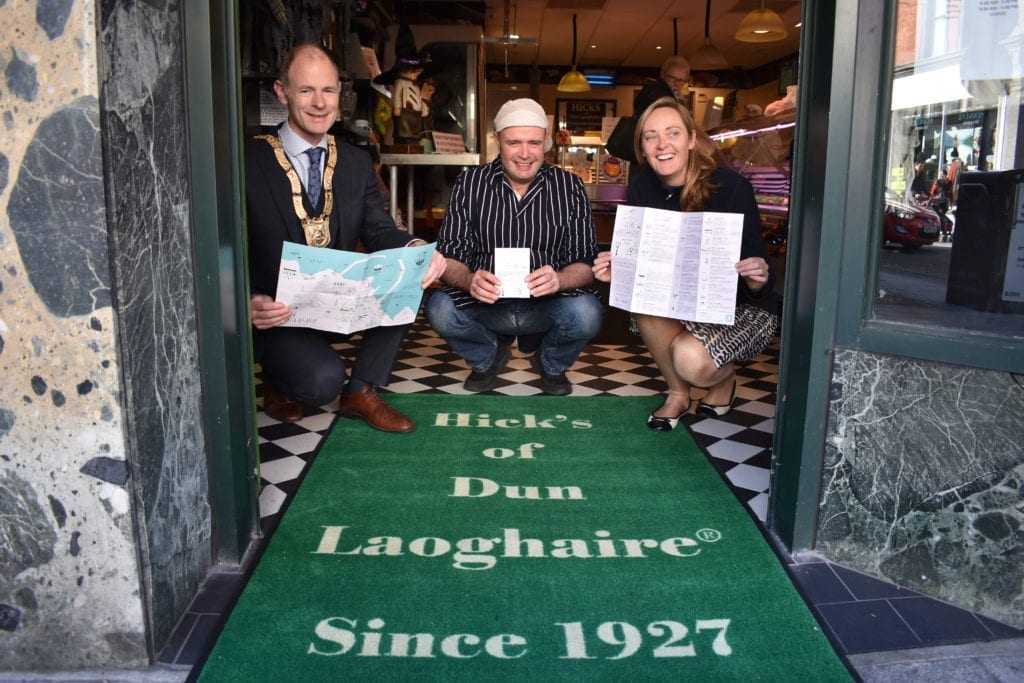
Cathaoirleach Ossian Smyth, Nigel Hick, Hick’s, Fiona Flood, Digital Dun Laoghaire
Details of the individual locations
- Bank of Ireland [1900] – 101 George’s Street Upper This building was occupied from 1900 by Daniel O’Connell’s National Bank. The National Bank was taken over by Bank of Ireland in 1966 and is now home to their Dún Laoghaire branch.
- Burnett’s Pharmacy [1890] – Burnett’s Pharmacy 101 George’s Street Upper Established in 1890. A former owner, Rose Marquess, was renowned to generations of families in the town as the pharmacist with a remedy for everything.
- Carnegie Library [1912] – Library Road Designed as part of an architectural competition and opened in 1912. Closed in 2014 when the dlr LexIcon Library was opened.
- Dún Laoghaire Baths [1843] – 16 Windsor Terrace Built in 1843, there were a range of bathing options including sea or fresh water, cold or hot water, or even medical baths. The Baths closed in 1997 and are currently being redeveloped.
- Dún Laoghaire Mallin Railway Station [1844] – Crofton Road Opening in 1834, the railway connecting Dún Laoghaire to Dublin was the first in Ireland. The station was built in 1844.
- Harbour Commissioner’s House [1820] – Crofton Rd Built in the neo-classical style with Dalkey granite in 1820. Contains an unusual staircase and is surmounted by a clock tower and signalling turret. Recently restored externally as the centrepiece of a modern office and residential complex.
- Hick’s [1927] – 60 George’s Street Lower In 1927 Henry Hick set up his shop. Since then, the family business has been trading and making their pork products for three generations.
- James Joyce Tower & Museum [1804] – Sandycove Point Built in 1804, this tower was one of many erected as small defensive forts by the British in response to a threatened invasion by Napoleon Bonaparte. These towers take their name from a 16th century tower located at Cape Mortella on the Island of Corsica. James Joyce chose this location for scenes in the opening chapter of ‘Ulysses’ and the tower now houses a museum dedicated to the great writer.
- King Laoghaire Monument [circa 450 AD] – Harbour Road Dùn Laoghaire is named after the fort of Irish High King Laoghaire. Laoghaire’s fort is believed to originate from circa 450 AD; the ‘King Laoghaire Monument’ (erected 1998) is located on its original site. The remains of the fort were damaged when the Martello Tower was built on the site in the nineteenth century, and the last remnants of the ‘dún’ were destroyed during the building of the railway in 1833–34.
- Leinster Memorial Anchor [1918] – Queen’s Road RMS Leinster was operated by the City of Dublin Steam Packet Company as the Dún Laoghaire-Holyhead mail boat until she was torpedoed and sunk by German submarine UB-123 on 10 October 1918. Over 500 people died; it was the greatest single loss of life in the Irish Sea.
- McManus Jewellers [1928] – 58 George’s Street Lower Founded in 1928, this second generation business deals in silver and gold jewellery as well as antiques.
- The Oratory [1919] – Library Road The Oratory of the Sacred Heart (1919 AD) was created to celebrate the end of World War I. A hidden treasure of Dún Laoghaire, it is the masterpiece of Sr. Concepta Lynch of the Dominican Convent, who devoted much of her spare time to decorating it with elaborate, colourful designs. It also contains stained glass windows by Harry Clarke.
- Kingstown Royal Harbour Hotel [1830] – George’s Place Built as Kingstown Royal Harbour Hotel & Guesthouse by Thomas Kelly in approximately 1830. A map of 1866 shows it as having extensive gardens and it hosted the inaugural meeting of the Kingstown Urban District Council in 1886.
Dun Laoghaire Bathhouse [1915] – George’s Place Built in 1915 as the Kingstown Urban District Council Baths and Wash House and Council Stores for a cost of £1059 on foot of Professor Barrett’s address to Kingstown Urban Council’s January 1911 meeting when he stated “The lowest price at which a working man could get a hot bath in Kingstown was 9d which of course is a prohibitive price…which is a state of affairs that ought to be put a stop to”.
Kingstown Fire Station [1899] –
George’s Place Built in 1899 it was described in the 1913 town directory as “a handsome pile of the Corinthian order. The building is in telephonic communication with the Exchange, the Police Station and Town Hall, so that there exists the greatest facility for arousing the brigade in case of an outbreak of fire.” - The Purty Kitchen [1728] – 3-5 Old Dunleary Rd Dating back to 1728, it’s the oldest pub in the area. It is at the centre of where the original Dun Leary fishing village was located where the first small pier was built in 1767 with a nearby coffee house being the centre of social activity.
- Royal Marine Hotel [1863] – Built in 1863. Hosted many heads of state, kings, queens and celebrities like Frank Sinatra and Charlie Chaplin. The Irish freedom fighter Michael Collins is believed to have hidden out in Room 210 with his partner Kitty Kiernan.
- Royal St. George Yacht Club [1838] – Harbour Road Founded in 1838 as one of the world’s first purpose-built yacht clubs. There are over 150 sailing boats, 1,900 members and a range of sailing and social activities located in the club.
- Samuel Beckett Memorial – East Pier Nobel Prize Winner and world famous writer Beckett writes in ‘Krapp’s Last Tape’ of taking a walk on the East Pier.
- St. Michael’s Church [1829] – Marine Road The new St. Michael’s Church was officially opened on 7 October, 1973. It was constituted in 1829 but destroyed by a fire in 1965, though the spire and great tower remain today — the 200 ft. spire is an 1895 replacement of an earlier tower.
- St. Michael’s Wharf – Dún Laoghaire Harbour Formerly known as Victoria Wharf. The landing and departure point for Queen Victoria during a number of her visits to Ireland during her reign.
- Dún Laoghaire Club – 3 Eblana Avenue. Built in 1830 “The Eblana Lodge” went through a succession of owners from department store Switzers (1850) to the Vance family of surgeons (1877) to Lt. General Henry Hall from the British Army to McCabe (1879) a Cardinal of the Roman Catholic Church becoming a club for social inclusion in 1910 which it operates as to this day.
